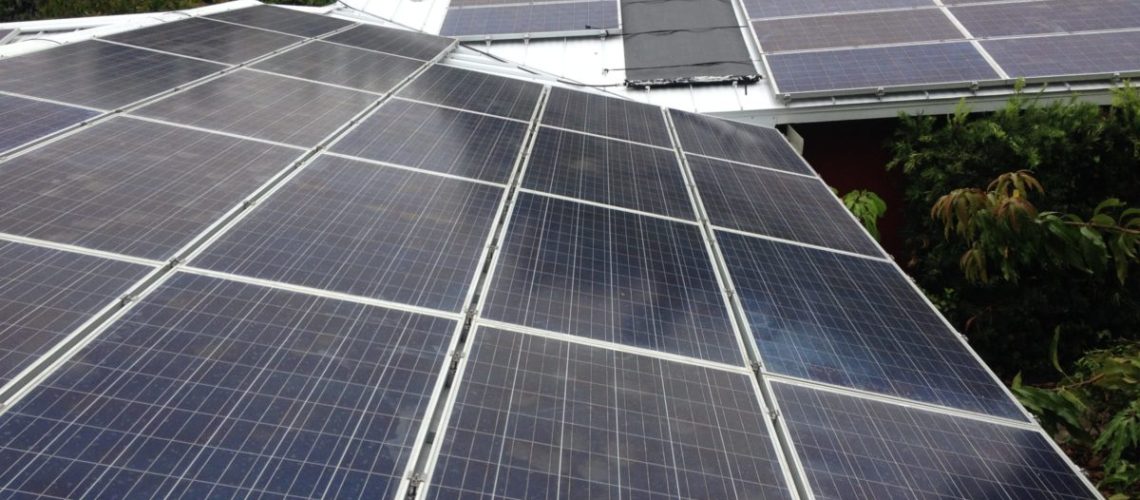The energy burden on disadvantaged or low-to-moderate income communities has translated to more than 15% of disadvantaged households’ income devoted to paying for energy each month as the cost for electricity rises, compared to 2 to 3% that average income households typically pay for energy each month.
Energy justice and solar deployments to disadvantaged communities were common themes during day one of the Intersolar North America and Energy Storage North America 2023 conference in Long Beach, Calif.
Over the last year following the Russia-Ukraine War, the energy burden on disadvantaged or low-to-moderate income (LM() communities has translated to more than 15% of disadvantaged households’ income devoted to paying for energy each month as the cost for electricity rises, compared to 2 to 3% that average income households typically pay for energy each month. Many LMI households have had to choose between paying their energy bill or providing food for their family each month, said a keynote speaker at Intersolar.
During a morning keynote session, Shalanda Baker, Director of the Office of Economic Impact and Diversity at the U.S. Department of Energy (DOE), pointed out that minority communities such as Black and Latino neighborhoods in urban environments suffer 56% and 63% more pollution attributable to industrial and power facilities than white communities. Such locations contribute to higher rates of asthma and health conditions, as well as children born with developmental disabilities.
Baker commended the work of the blossoming community solar developers in attendance at the annual trade show, adding that the energy justice adder and incentives under the federal Inflation Reduction Act (IRA) should contribute to the rapid electrification of disadvantaged communities, with inexpensive solar available to more households that traditionally were unable to access clean energy.
Even before the IRA passed, Baker noted the Biden Administration’s passing of the Justice40 initiative, a policy in which 40% of domestic clean energy investment be devoted to minority and disadvantaged communities for solar, EV charging and other infrastructure improvements.
Baker noted that lately over 20% of DOE energy project applications are LMI community inclusive, and focused on growing that number to incorporate “place-based commitments” for solar and distributed generation resources.
Developers should note that the government is not just handing out rebates for projects that on paper look to be qualified LMI communities. The DOE diversity official noted that developers of community solar projects are required to procure letters and petitions from county and local businesses, residents and municipal groups in support of new project development.
During Baker’s presentation an image of downtown Austin, Texas was shown from February 15, 2021, when Winter Storm Uri created a prolonged grid failure event at the power transmission and distribution level in the state of Texas. The image taken by journalist Terri Gruca of KVUE showed the illuminated downtown Austin skyline with the University of Austin on the right side, with the lefthand side of the highway blacked out where lower income and minority communities live.
“Minority communities throughout Texas face longer outages times and fossil fuel exposure,” Baker said. “An equitable transition away from fossil fuels encapsulates a broad need for a just energy system.”
Energy justice seeks to correct damage done to people in low-income communities which have long suffered from fossil fuel pollution near their homes, lack of access to renewables-driven affordable electricity, climate change, and more.
The DOE has developed a method for designating disadvantaged communities based on 36 criteria related to energy burden, environmental and climate hazards, socio-economic vulnerabilities, and fossil-fuel dependence.
People living in these communities have several barriers to adoption. Many do not own the home they live in and are likely to live in multi-family housing units. Therefore, putting solar on the rooftop is not a viable option. Because such households are on low incomes, they often have low credit scores and cannot take advantage of the no-upfront-cost lease options on the market. Furthermore, their budgets are stretched thin – especially in the current economic climate – and they have little or no expendable income.
Community solar is especially applicable for those who can’t afford to “go solar” on their own, those who don’t own a rooftop, and those whose rooftops are not suitable for solar. The IRA offers support in the form of tax incentives, with a 30% tax credit for the solar installation plus three adders that can add up to 70%. Additionally, the IRA includes the interconnection fee in that tax credit.



